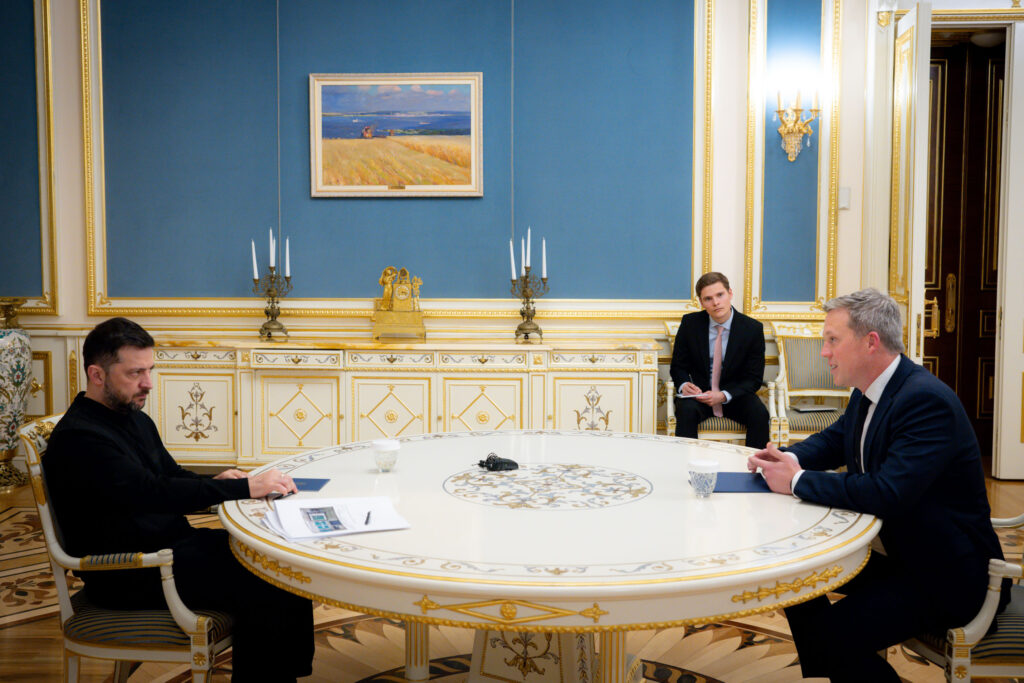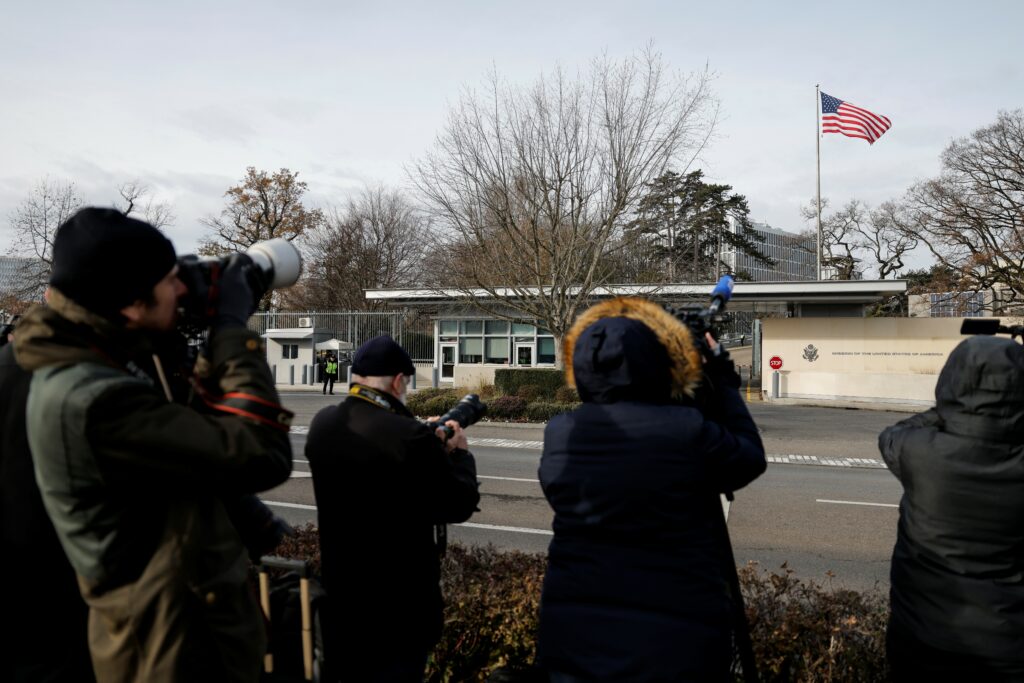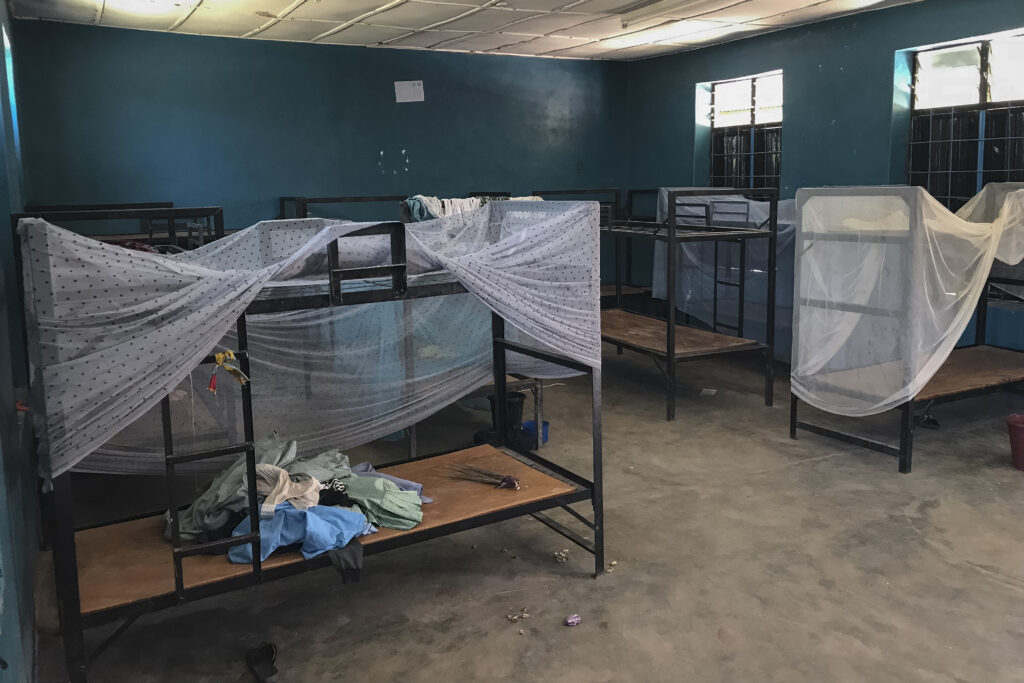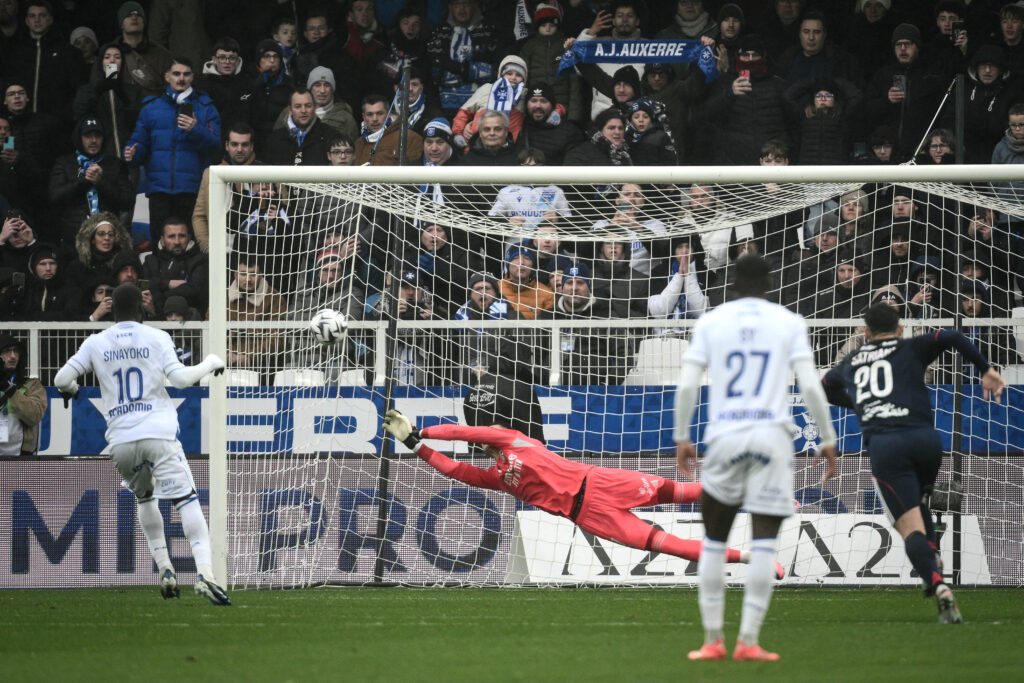Les municipales seront un “galop d’essai” pour LFI avant 2027, prévient Mélenchon
La France insoumise a officiellement lancé dimanche sa campagne pour les municipales de 2026 avec un meeting en Seine-Saint-Denis où son leader Jean-Luc Mélenchon a placé ces différents scrutins locaux dans la perspective de l’élection présidentielle qui suivra, en vantant notamment son concept de la “Nouvelle France”.”Ce seront des élections politiques du fait du contexte actuel (…) nous serons à un an de l’élection présidentielle, dont ceci pourrait bien être un galop d’essai. Cette élection peut donc préfigurer le monde que nous voulons commencer”, a lancé le fondateur de LFI devant une foule de 2.000 militants, selon l’organisation, réunie aux Docks de Paris, une salle d’Aubervilliers. “Il s’agit d’élever le niveau de conscience et de faire de cette élection un temps fort d’éducation politique populaire de masse, car nous en aurons besoin en 2027, si la France nous choisit pour gouverner le pays”, a ajouté le triple candidat à la présidentielle, qui est pressenti pour représenter une nouvelle fois l’écurie LFI à la prochaine course à l’Elysée.Les municipales ne seront “pas seulement des campagnes locales, il y a aussi des orientations communes à porter sur l’ensemble du territoire”, a appuyé devant la presse le coordinateur national de LFI, Manuel BompardLors d’un discours plutôt théorique, Jean-Luc Mélenchon a une nouvelle fois fait l’éloge de son concept de “Nouvelle France”, une société plus urbaine et plus métissée.”Notre Nouvelle France est là: nouvelle comme sa population, sa façon de vivre, sa vie, sa créolisation et par-dessus tout son appétit du futur”, a énuméré l’ancien sénateur socialiste, dont la formation compte sur la jeunesse et les quartiers populaires pour l’amener vers la victoire. Si le fondateur du mouvement Insoumis s’est gardé de porter des coups aux autres partis de gauche, ses lieutenants n’ont pas eu la même réserve.- Préparer les sénatoriales -La députée Nadège Abomangoli, vice-présidente de l’Assemblée nationale, a ainsi ouvert le meeting en fustigeant ceux à gauche “qui veulent des voix des Insoumis mais pas d’élus Insoumis”, une manière de viser notamment le PS.”Celles et ceux qui votent pour La France insoumise depuis dix ans ont le droit d’être représentés”, a-t-elle insisté.Pour les municipales de mars 2026, LFI sera présente, en tête de liste ou en soutien à une liste, dans à peu près 500 villes, dont 80% des communes de plus de 30.000 habitants. Et dans la grande majorité des cas, les Insoumis présenteront leurs propres listes, sans s’unir avec les Ecologistes, le Parti socialiste ou le Parti communiste.La formation de gauche radicale n’espère pas gagner énormément de mairies, seulement deux ou trois, mais entend pénétrer massivement dans les conseils municipaux.LFI avait en effet enjambé les scrutins municipaux de 2020 et ne dirige donc actuellement que deux villes de plus de 5.000 habitants.Gagner des conseillers municipaux permettrait au mouvement, qui ne compte aucun élu au Sénat, de se positionner pour les prochaines élections sénatoriales, de 2026 et 2029, où ce sont les grands électeurs qui votent. “Message à tous ceux qui pensent pouvoir nous évincer de leurs combinaisons d’appareil: La France insoumise préparera les prochaines élections sénatoriales en même temps que l’élection présidentielle”, a ainsi prévenu le député Paul Vannier, en charge des élections au sein de l’appareil mélenchoniste.Dans beaucoup de municipalités, les tensions à gauche laissent présager d’âpres négociations de second tour, où le score nécessaire pour se maintenir est de 10% et celui pour fusionner avec une autre liste est de 5%. “Partout où nous serons en tête au soir du premier tour, nous proposerons aux autres listes de gauche prêtes à défendre avec nous un programme de rupture, de nous retrouver”, a appuyé Paul Vannier. Pour les municipales, les Insoumis comptent s’appuyer sur leurs bons scores dans les banlieues populaires et les grandes métropoles: la direction du mouvement a identifié Roubaix (Nord), La Courneuve (Seine-Saint-Denis) ou encore Evry (Essonne) comme commune où la victoire serait un objectif crédible.Ils entendent notamment proposer le développement de la régie publique de l’eau, celui des cantines scolaires gratuites et biologiques, ou la mise en place d’un référendum d’initiative citoyenne (RIC) municipal.
Les municipales seront un “galop d’essai” pour LFI avant 2027, prévient Mélenchon
La France insoumise a officiellement lancé dimanche sa campagne pour les municipales de 2026 avec un meeting en Seine-Saint-Denis où son leader Jean-Luc Mélenchon a placé ces différents scrutins locaux dans la perspective de l’élection présidentielle qui suivra, en vantant notamment son concept de la “Nouvelle France”.”Ce seront des élections politiques du fait du contexte actuel (…) nous serons à un an de l’élection présidentielle, dont ceci pourrait bien être un galop d’essai. Cette élection peut donc préfigurer le monde que nous voulons commencer”, a lancé le fondateur de LFI devant une foule de 2.000 militants, selon l’organisation, réunie aux Docks de Paris, une salle d’Aubervilliers. “Il s’agit d’élever le niveau de conscience et de faire de cette élection un temps fort d’éducation politique populaire de masse, car nous en aurons besoin en 2027, si la France nous choisit pour gouverner le pays”, a ajouté le triple candidat à la présidentielle, qui est pressenti pour représenter une nouvelle fois l’écurie LFI à la prochaine course à l’Elysée.Les municipales ne seront “pas seulement des campagnes locales, il y a aussi des orientations communes à porter sur l’ensemble du territoire”, a appuyé devant la presse le coordinateur national de LFI, Manuel BompardLors d’un discours plutôt théorique, Jean-Luc Mélenchon a une nouvelle fois fait l’éloge de son concept de “Nouvelle France”, une société plus urbaine et plus métissée.”Notre Nouvelle France est là: nouvelle comme sa population, sa façon de vivre, sa vie, sa créolisation et par-dessus tout son appétit du futur”, a énuméré l’ancien sénateur socialiste, dont la formation compte sur la jeunesse et les quartiers populaires pour l’amener vers la victoire. Si le fondateur du mouvement Insoumis s’est gardé de porter des coups aux autres partis de gauche, ses lieutenants n’ont pas eu la même réserve.- Préparer les sénatoriales -La députée Nadège Abomangoli, vice-présidente de l’Assemblée nationale, a ainsi ouvert le meeting en fustigeant ceux à gauche “qui veulent des voix des Insoumis mais pas d’élus Insoumis”, une manière de viser notamment le PS.”Celles et ceux qui votent pour La France insoumise depuis dix ans ont le droit d’être représentés”, a-t-elle insisté.Pour les municipales de mars 2026, LFI sera présente, en tête de liste ou en soutien à une liste, dans à peu près 500 villes, dont 80% des communes de plus de 30.000 habitants. Et dans la grande majorité des cas, les Insoumis présenteront leurs propres listes, sans s’unir avec les Ecologistes, le Parti socialiste ou le Parti communiste.La formation de gauche radicale n’espère pas gagner énormément de mairies, seulement deux ou trois, mais entend pénétrer massivement dans les conseils municipaux.LFI avait en effet enjambé les scrutins municipaux de 2020 et ne dirige donc actuellement que deux villes de plus de 5.000 habitants.Gagner des conseillers municipaux permettrait au mouvement, qui ne compte aucun élu au Sénat, de se positionner pour les prochaines élections sénatoriales, de 2026 et 2029, où ce sont les grands électeurs qui votent. “Message à tous ceux qui pensent pouvoir nous évincer de leurs combinaisons d’appareil: La France insoumise préparera les prochaines élections sénatoriales en même temps que l’élection présidentielle”, a ainsi prévenu le député Paul Vannier, en charge des élections au sein de l’appareil mélenchoniste.Dans beaucoup de municipalités, les tensions à gauche laissent présager d’âpres négociations de second tour, où le score nécessaire pour se maintenir est de 10% et celui pour fusionner avec une autre liste est de 5%. “Partout où nous serons en tête au soir du premier tour, nous proposerons aux autres listes de gauche prêtes à défendre avec nous un programme de rupture, de nous retrouver”, a appuyé Paul Vannier. Pour les municipales, les Insoumis comptent s’appuyer sur leurs bons scores dans les banlieues populaires et les grandes métropoles: la direction du mouvement a identifié Roubaix (Nord), La Courneuve (Seine-Saint-Denis) ou encore Evry (Essonne) comme commune où la victoire serait un objectif crédible.Ils entendent notamment proposer le développement de la régie publique de l’eau, celui des cantines scolaires gratuites et biologiques, ou la mise en place d’un référendum d’initiative citoyenne (RIC) municipal.
Les municipales seront un “galop d’essai” pour LFI avant 2027, prévient Mélenchon
La France insoumise a officiellement lancé dimanche sa campagne pour les municipales de 2026 avec un meeting en Seine-Saint-Denis où son leader Jean-Luc Mélenchon a placé ces différents scrutins locaux dans la perspective de l’élection présidentielle qui suivra, en vantant notamment son concept de la “Nouvelle France”.”Ce seront des élections politiques du fait du contexte actuel (…) nous serons à un an de l’élection présidentielle, dont ceci pourrait bien être un galop d’essai. Cette élection peut donc préfigurer le monde que nous voulons commencer”, a lancé le fondateur de LFI devant une foule de 2.000 militants, selon l’organisation, réunie aux Docks de Paris, une salle d’Aubervilliers. “Il s’agit d’élever le niveau de conscience et de faire de cette élection un temps fort d’éducation politique populaire de masse, car nous en aurons besoin en 2027, si la France nous choisit pour gouverner le pays”, a ajouté le triple candidat à la présidentielle, qui est pressenti pour représenter une nouvelle fois l’écurie LFI à la prochaine course à l’Elysée.Les municipales ne seront “pas seulement des campagnes locales, il y a aussi des orientations communes à porter sur l’ensemble du territoire”, a appuyé devant la presse le coordinateur national de LFI, Manuel BompardLors d’un discours plutôt théorique, Jean-Luc Mélenchon a une nouvelle fois fait l’éloge de son concept de “Nouvelle France”, une société plus urbaine et plus métissée.”Notre Nouvelle France est là: nouvelle comme sa population, sa façon de vivre, sa vie, sa créolisation et par-dessus tout son appétit du futur”, a énuméré l’ancien sénateur socialiste, dont la formation compte sur la jeunesse et les quartiers populaires pour l’amener vers la victoire. Si le fondateur du mouvement Insoumis s’est gardé de porter des coups aux autres partis de gauche, ses lieutenants n’ont pas eu la même réserve.- Préparer les sénatoriales -La députée Nadège Abomangoli, vice-présidente de l’Assemblée nationale, a ainsi ouvert le meeting en fustigeant ceux à gauche “qui veulent des voix des Insoumis mais pas d’élus Insoumis”, une manière de viser notamment le PS.”Celles et ceux qui votent pour La France insoumise depuis dix ans ont le droit d’être représentés”, a-t-elle insisté.Pour les municipales de mars 2026, LFI sera présente, en tête de liste ou en soutien à une liste, dans à peu près 500 villes, dont 80% des communes de plus de 30.000 habitants. Et dans la grande majorité des cas, les Insoumis présenteront leurs propres listes, sans s’unir avec les Ecologistes, le Parti socialiste ou le Parti communiste.La formation de gauche radicale n’espère pas gagner énormément de mairies, seulement deux ou trois, mais entend pénétrer massivement dans les conseils municipaux.LFI avait en effet enjambé les scrutins municipaux de 2020 et ne dirige donc actuellement que deux villes de plus de 5.000 habitants.Gagner des conseillers municipaux permettrait au mouvement, qui ne compte aucun élu au Sénat, de se positionner pour les prochaines élections sénatoriales, de 2026 et 2029, où ce sont les grands électeurs qui votent. “Message à tous ceux qui pensent pouvoir nous évincer de leurs combinaisons d’appareil: La France insoumise préparera les prochaines élections sénatoriales en même temps que l’élection présidentielle”, a ainsi prévenu le député Paul Vannier, en charge des élections au sein de l’appareil mélenchoniste.Dans beaucoup de municipalités, les tensions à gauche laissent présager d’âpres négociations de second tour, où le score nécessaire pour se maintenir est de 10% et celui pour fusionner avec une autre liste est de 5%. “Partout où nous serons en tête au soir du premier tour, nous proposerons aux autres listes de gauche prêtes à défendre avec nous un programme de rupture, de nous retrouver”, a appuyé Paul Vannier. Pour les municipales, les Insoumis comptent s’appuyer sur leurs bons scores dans les banlieues populaires et les grandes métropoles: la direction du mouvement a identifié Roubaix (Nord), La Courneuve (Seine-Saint-Denis) ou encore Evry (Essonne) comme commune où la victoire serait un objectif crédible.Ils entendent notamment proposer le développement de la régie publique de l’eau, celui des cantines scolaires gratuites et biologiques, ou la mise en place d’un référendum d’initiative citoyenne (RIC) municipal.
Trump blasts Ukraine for ‘zero gratitude’ amid talks to halt war
US President Donald Trump on Sunday accused Ukraine again of lacking “gratitude” for Washington’s support against Russia’s invasion, as top US and Ukrainian representatives met in Geneva for talks on a proposal to halt the war.”UKRAINE ‘LEADERSHIP’ HAS EXPRESSED ZERO GRATITUDE FOR OUR EFFORTS,” Trump wrote on his Truth Social platform, also blasting European countries for not doing enough to stop the war, but offering no direct condemnation of Moscow.His comments came as US Secretary of State Marco Rubio was meeting with top Ukrainian officials in a wintery Geneva Sunday to discuss the US president’s controversial 28-point plan for ending the nearly four-year conflict.The Ukrainian delegation, headed by Andriy Yermak, also met with high-level officials from Britain, France and Germany in the Swiss city, as European countries scramble to have a seat at the table in the discussions.Trump had given Ukraine until November 27 to approve the plan, but Kyiv wants changes to a draft that accepts a range of Russia’s hardline demands, including requiring the invaded country to cede territory, cut its army and pledge never to join NATO.German Chancellor Friedrich Merz on Sunday said he was “sceptical” a deal could be reached by that deadline.The US president told reporters Saturday the proposal was not his final offer and he hoped to stop the fighting “one way or the other”, raising hopes that it would be possible to strengthen Kyiv’s position.- ‘Ukrainian perspectives’ included -A US official, who asked not to be named, told AFP that a number of meetings were held throughout the day Sunday, with the US and Ukrainian delegation holding “detailed discussions about the peace agreement”.”It was productive and even conclusive in some areas,” the official said, adding that a second round of talks underway at the US mission in Geneva aimed at “ironing out the details of the agreement”.By late Sunday afternoon, Ukrainian negotiator Rustem Umerov said the latest version of the US draft plan, which AFP has not seen, “already reflects most of Ukraine’s key priorities”.Ukrainian President Volodymyr Zelensky also said on social media that the “American proposals may include a number of elements based on Ukrainian perspectives and critical for Ukrainian national interests”, hailing that “diplomacy has been reinvigorated”.- Recognise European ‘centrality’ -The US plan was drafted without input from Ukraine’s European allies, who were striving Sunday to make their voices heard and boost Kyiv’s position.”Ukraine must have the freedom and sovereign right to choose its own destiny. They have chosen a European destiny,” EU chief Ursula von der Leyen said in a statement, stressing that the “centrality” of the European Union’s role must be “fully reflected” in any peace plan. Ukraine’s European allies gathered at the G20 summit in South Africa stressed that the US plan requires “additional work”.Finnish President Alexander Stubb told AFP that he and Italian leader Giorgia Meloni had called Trump early Sunday to discuss his Ukraine proposal.”Of course, we discussed the situation, the 28-point plan, and some of the developments here in Johannesburg related to the peace plan,” he said, declining to reveal the content of the discussions.French President Emmanuel Macron told a news conference at the G20 that the plan contained points that had to be more broadly discussed as they concerned European allies, such as Ukraine’s NATO ties and Russian frozen assets held in the EU.He said the 30 countries in the “coalition of the willing” supporting Kyiv will hold a video call on Tuesday following the Geneva talks.European Union countries were also planning to meet to discuss the Ukraine situation on the sidelines of a meeting with African leaders in Angola on Monday.- ‘Wish list’ -Questions were meanwhile being raised over how much input Moscow may have had in drafting the original proposal, which was welcomed by the Kremlin.Russian President Vladimir Putin has said the blueprint could “lay the foundation” for a final peace settlement, but threatened more land seizures if Ukraine walked away from negotiations.Ahead of Sunday’s talks, Washington insisted the Trump proposal was official US policy, denying claims by a group of US senators that Rubio told them the document was a Russian “wish list”. Rubio himself insisted on social media late Saturday that “the peace proposal was authored by the US”. “It is offered as a strong framework for ongoing negotiations. It is based on input from the Russian side. But it is also based on previous and ongoing input from Ukraine.”That did not calm all concerns.”Together with the leaders of Europe, Canada and Japan, we have declared our readiness to work on the 28-point plan despite some reservations,” Polish Prime Minister Donald Tusk said on X Sunday. “However, before we start our work, it would be good to know for sure who is the author of the plan and where was it created.”
Israël frappe la banlieue de Beyrouth, affirme avoir visé le chef d’état-major du Hezbollah
Israël a mené une frappe meurtrière dimanche dans la banlieue sud de Beyrouth, affirmant viser le chef d’état-major du Hezbollah pro-iranien, qui n’a pas confirmé si ce haut cadre avait été tué. Cette attaque, annoncée après que Benjamin Netanyahu a juré de “faire tout le nécessaire” pour empêcher un renforcement du mouvement pro-iranien, a fait cinq morts et 28 blessés, selon le ministère libanais de la Santé. C’est la cinquième fois qu’Israël frappe la banlieue sud de Beyrouth, un fief du mouvement chiite, depuis le cessez-le-feu conclu en novembre 2024 après un an de conflit au cours duquel l’armée israélienne a tué le chef du Hezbollah et plusieurs de ses responsables militaires.L’attaque est intervenue une semaine avant la visite du pape Léon XIV, attendu le 30 novembre au Liban. Dans cette zone densément peuplée, la frappe a touché les troisième et quatrième étages d’un immeuble de neuf étages, et laissé plusieurs voitures calcinées à son pied, a constaté un journaliste de l’AFP.Il a vu les secouristes évacuer un corps enveloppé dans un sac blanc et au moins six blessés, dont trois femmes, de l’immeuble au rez-de-chaussée duquel s’alignent une pâtisserie, un magasin de jouets et une boutique d’électroménager. “Je rendais visite à ma mère et j’étais sur le balcon”, a raconté à l’AFP un homme qui se trouvait dans un immeuble faisant face au bâtiment touché. “Il y a eu comme un éclair, puis j’ai percuté la balustrade et tout le verre s’est brisé”, a ajouté ce quadragénaire en état de choc, qui n’a pas voulu dire son nom.-“Faire tout le nécessaire” -Le Premier ministre israélien Benjamin Netanyahu s’était engagé plus tôt dans la matinée à “faire tout le nécessaire” pour empêcher un renforcement du mouvement pro-iranien, ainsi que du Hamas à Gaza, ouvrant une réunion de son cabinet.Son bureau a annoncé dans la foulée que l’armée israélienne venait d'”attaquer au coeur de Beyrouth, le chef d’état-major du Hezbollah qui a dirigé le renforcement et l’armement de l’organisation terroriste”. M. Netanyahu “a ordonné l’attaque sur recommandation du ministre de la Défense et du chef d’état-major”, a ajouté son bureau.Le Hezbollah a confirmé qu’une “personnalité de la résistance” contre Israël avait été visée, sans préciser son identité ni si elle avait été tuée.Le président libanais Joseph Aoun a appelé la communauté internationale à “intervenir sérieusement et avec force pour mettre fin aux attaques contre le Liban” menées par Israël, soulignant que le Liban respectait de son côté le cessez-le-feu. Shosh Bedrosian, porte-parole de M. Netanyahu, a affirmé à la presse ne pas pouvoir “donner le nom de la cible”. “Israël prend ses décisions de manière indépendante”, a-t-elle précisée, interrogée pour savoir si les Etats-Unis avaient été tenus au courant de l’attaque.Washington, qui fait partie avec Paris d’un comité international chargé de surveiller l’application du cessez-le-feu, n’a pas été prévenu à l’avance de l’attaque, a affirmé le correspondant israélien du site d’information Axios, citant deux responsables américains. – “Ligne rouge” -Israël a récemment intensifié ses frappes dans les bastions du Hezbollah au sud et à l’est du Liban, où il affirme viser le mouvement chiite qu’il accuse de violer le cessez-le-feu en se réarmant et réactivant ses infrastructures. Le Hezbollah avait lancé les hostilités en ouvrant un front contre Israël au début de la guerre à Gaza, déclenchée par l’attaque du Hamas sur le sol israélien du 7 octobre 2023. Un cessez-le-feu est en vigueur dans le territoire palestinien depuis le 10 octobre.”Nous continuerons à agir avec force pour prévenir toute menace contre les habitants du nord et l’Etat d’Israël. Quiconque lèvera la main contre Israël verra sa main coupée”, a martelé le ministre israélien de la Défense, Israël Katz. Le Hezbollah, sorti affaibli du conflit avec Israël, qui a culminé en deux mois de guerre ouverte avant la trêve, assure pour sa part respecter le cessez-le-feu. Mais un haut responsable de la formation chiite, accouru sur le site frappé dimanche, a accusé Israël d’avoir “franchi une nouvelle ligne rouge”. Pour leur part, les autorités libanaises accusent régulièrement Israël de violer l’accord de cessez-le-feu conclu sous médiation américaine, en poursuivant ses frappes et en continuant d’occuper cinq points stratégiques du sud du territoire libanais.Les Etats-Unis font dans le même temps pression sur le gouvernement libanais pour qu’il oblige le Hezbollah à rendre ses armes, ce que le groupe a jusqu’à présent refusé de faire.bur-nad-dms-cab-at/cab
Américains et Ukrainiens discutent à Genève du plan de Trump pour l’Ukraine
Donald Trump a accusé dimanche les dirigeants ukrainiens de ne faire preuve “d’aucune gratitude” envers les Etats-Unis, alors que le secrétaire d’Etat Marco Rubio rencontre à Genève une délégation de Kiev dans l’espoir de faire avancer le plan du président américain sur l’Ukraine.”Les responsables ukrainiens n’ont exprimé aucune gratitude pour nos efforts”, a écrit le président américain sur Truth Social, affirmant avoir “hérité d’une guerre qui n’aurait jamais dû arriver”.Jusqu’à présent, rien ne filtre sur le contenu des pourparlers en Suisse sur ce plan en 28 points, qui vise à mettre fin au conflit provoqué par près de quatre ans d’invasion russe.La version initiale du texte faisait écho à plusieurs exigences de Moscou et suscité l’opposition de Kiev et de ses alliés européens, venus dimanche à Genève pour éviter une paix en forme de capitulation.Salué par le président russe Vladimir Poutine, le texte initial reprenait plusieurs exigences clés de Moscou: que l’Ukraine lui cède des territoires, accepte de réduire la taille de son armée et renonce à intégrer l’Otan. Tout en offrant des garanties de sécurité occidentales à Kiev pour prévenir toute nouvelle attaque russe.Le texte proposait signifiait aussi la fin de l’isolement de la Russie à l’égard du monde occidental avec sa réintégration au G8 et la levée progressive des sanctions.- “priorités clés” -L’un des membres de la délégation ukrainienne, Roustem Oumerov, à la tête du Conseil de sécurité ukrainien, a estimé dimanche que la nouvelle version du texte, que l’AFP n’a pas vue, “reflète déjà la plupart des priorités clés” de Kiev.Le président ukrainien a lui jugé sur X “positif que la diplomatie ait été ravivée et que le dialogue puisse être constructif”, ajoutant : “nous avons tous besoin d’un résultat positif”.Donald Trump avait donné jusqu’au 27 novembre à son homologue ukrainien pour répondre, mais il a indiqué samedi que son plan ne constituait pas sa “dernière offre” pour régler le conflit.Ce texte “présente un cadre solide de négociations. Il se fonde sur des éléments fournis par la partie russe mais également sur des apports de l’Ukraine”, a complété M. Rubio sur X.A Genève, M. Rubio a rencontré dans la matinée le négociateur de Kiev, Andriï Iermak, qui s’est également entretenu avec des représentants du Royaume-Uni, de la France et de l’Allemagne.Une nouvelle réunion bilatérale s’est déroulé dans l’après-midi entre Américains et Ukrainiens au sein de la Représentation américaine à Genève, proche de l’ONU.”Ils vont régler les détails de l’accord”, a indiqué à l’AFP un responsable américain.- tractations -Mais le chancelier allemand Friedrich Merz s’est dit lui “sceptique” sur les chances de parvenir à un accord sur le plan d’ici le 27 novembre.”La tâche consiste désormais à faire du plan (…) un document viable”, a encore déclaré M. Merz, lors du sommet du G20 à Johannesburg. Il a indiqué avoir fait une proposition, actuellement en discussion à Genève, qui pourrait permettre de “faire au moins un premier pas jeudi”.Les Européens cherchent par tous les moyens à ne pas être tenus à l’écart des tractations autour du plan. Le président finlandais Alexander Stubb a indiqué à l’AFP avoir appelé dimanche son homologue américain, avec la Première ministre italienne Giorgia Meloni, pour discuter du plan pour l’Ukraine.”L’Ukraine doit avoir la liberté et le droit souverain de choisir son propre destin. Elle a choisi un destin européen”, a affirmé dimanche la présidente de la Commission Ursula von der Leyen, soulignant que le rôle “central” de l’Union européenne doit être “pleinement reconnu” dans tout plan de paix sur l’Ukraine.”Notre objectif partagé est d’obtenir une paix robuste. Il faut donc des garanties de sécurité solides”, a indiqué pour sa part à Genève la délégation française à l’AFP.Réunis au sommet du G20 à Johannesburg, 11 pays principalement européens ont estimé samedi dans une déclaration que le plan américain “requerra du travail supplémentaire”, craignant qu’il ne laisse l’Ukraine “vulnérable à de futures attaques”.Une réunion sur l’Ukraine des dirigeants des pays de l’UE est prévue lundi, en marge d’un sommet avec des dirigeants africains en Angola. Le président français Emmanuel Macron a annoncé une réunion mardi en visioconférence des pays soutenant l’Ukraine. Selon lui, sans “éléments de dissuasion, les Russes reviendront”.Le président turc Recep Tayyip Erdogan a lui déclaré qu’il s’entretiendrait lundi avec son homologue russe, affirmant depuis le G20 : Nous ferons tout notre possible pour ouvrir la voie à la paix”. burs-apo/nl/cls
Nigeria: 50 des quelque 300 élèves enlevés d’une école catholique se sont échappés (association chrétienne)
Cinquante des plus de 300 élèves enlevés vendredi dans une école catholique de l’ouest du Nigeria ont échappé à leurs ravisseurs, a annoncé dimanche une organisation chrétienne.Des hommes armés non identifiés ont attaqué tôt vendredi l’école catholique mixte Saint Mary, située dans l’Etat du Niger, et ont enlevé 303 élèves et 12 enseignants. Il s’agit de l’un des plus importants enlèvements de masse jamais perpétrés au Nigeria, pays ravagé par le phénomène. Les garçons et filles enlevés à Saint Mary, âgés de huit à 18 ans, représentent près de la moitié des 629 élèves de l’établissement.”Nous avons reçu une bonne nouvelle: 50 élèves se sont échappés et ont retrouvé leurs parents”, a indiqué l’Association chrétienne du Nigeria (CAN) dans un communiqué, précisant qu’ils se sont évadés entre vendredi et samedi.Lundi, un autre groupe d’hommes armés avait déjà pris d’assaut un lycée de l’Etat voisin de Kebbi (nord-ouest) et enlevé 25 jeunes filles.Cette nouvelle série d’enlèvements dans des écoles a entraîné la fermeture par précaution de nombreux établissements scolaires à travers le pays le plus peuplé d’Afrique avec 230 millions d’habitants, confronté à de multiples menaces pour sa sécurité.Les autorités du Nigeria combattent depuis 2009 une insurrection jihadiste dans le nord-est du pays et font également face à des bandes criminelles lourdement armées, appelés localement “bandits”, qui ont intensifié ces dernières années, dans le nord-ouest et le centre, leurs attaques meurtrières – parfois accompagnés d’enlèvements pour obtenir des rançons.Le gouvernement nigérian n’a pas encore fait de commentaire sur le nombre d’élèves et d’enseignants enlevés.- “immense tristesse” -Aucun groupe n’a revendiqué ces attaques, pas plus que celle mardi contre une église de l’ouest du pays, durant laquelle deux personnes ont été tuées et des dizaines de personnes pourraient avoir été capturées.”Même si le retour de ces 50 enfants qui ont réussi à s’échapper nous apporte un certain soulagement, je vous exhorte tous à continuer de prier pour le sauvetage et le retour sains et saufs des autres victimes”, a déclaré dans un communiqué le père Bulus Dauwa Yohanna, président de la CAN dans l’Etat du Niger et propriétaire de l’école.Le Nigeria reste profondément marqué par un autre enlèvement de masse, celui de près de 300 jeunes filles par les jihadistes de Boko Haram à Chibok, dans l’Etat de Borno (nord-est), en avril 2014. Plus de dix ans plus tard, certaines d’entre elles sont toujours portées disparues.Dimanche le pape Léon XIV a dit son “immense tristesse” après ces enlèvements au Nigeria et a lancé “un appel pressant à la libération immédiate des otages”.”Prions pour nos frères et sœurs et pour que les églises et les écoles demeurent toujours et partout des lieux de sécurité et d’espoir”, a-t-il ajouté.Vendredi, le président américain Donald Trump avait réagi à ces récentes attaques en estimant que “ce qui se passe au Nigeria est une honte”.Donald Trump a récemment menacé d’intervenir militairement au Nigeria, accusant les autorités nigérianes de “tolérer les meurtres de chrétiens” par des islamistes radicaux.Les autorités d’Abuja ont qualifié ces affirmations de “fondamentalement erronées”, nié toute “persécution religieuse systématique” au Nigeria, divisé de manière presque égale entre un nord à majorité musulmane et un sud majoritairement chrétien.Les attaques dans le pays visent et tuent aussi bien des chrétiens que des musulmans, souvent sans distinction.
Ligue 1: Lyon s’en sort bien avec un nul (0-0) à Auxerre
Lyon a été tenu en échec (0-0) sur le terrain de la lanterne rouge Auxerre, dimanche lors de la 13e journée de Ligue 1, et continue de faire du surplace en championnat, où les Lyonnais n’ont gagné aucune de leurs quatre dernières rencontres.Avant la trêve internationale, l’OL avait concédé un résultat nul à Brest (0-0) et face au Paris FC (3-3) avant de perdre devant le Paris Saint-Germain (3-2). Il s’est aussi incliné sur la pelouse du Betis Séville en Ligue Europa (2-0).En attendant les derniers matches de dimanche, l’OL est 6e à sept longueurs du podium alors que les Auxerrois restent derniers, sans être décrochés.L’AJA n’a gagné aucun de ses huit derniers matches (2 nuls) et restait sur quatre défaites. L’équipe de Christophe Pélissier a une nouvelle fois souffert de son inefficacité offensive alors qu’elle a été dominatrice au milieu.Car, globalement, Lyon s’en sort plutôt bien sur ce match. Handicapés par l’absence de plusieurs joueurs majeurs comme Nicolas Tagliafico ou Tyler Morton, suspendus, alors que Clinton Mata est sorti sur blessure en début de seconde période, ils auraient pu être menés par des Icaunais assez combatifs.Eux aussi étaient privés de plusieurs titulaires comme Elisha Owusu, Lasso Coulibaly, Telli Siwe ou Francisco Sierralta.- But refusé, penalty manqué -Un but a été refusé à Rudy Matondo pour une faute préalable de Sekou Mara sur Mata (12e) alors que le gardien Dominik Greif a détourné un penalty tiré par Lamine Sinayoko, accordé pour une faute de Moussa Niakhaté sur Mara (25e).Ce dernier, contré par Mata, a aussi été dangereux sur un centre de Sinayoko (55e) avant que Mata, encore lui, ne sauve in extremis son équipe devant son gardien après un centre délivré par Lamine Sy (61e).Le portier de l’OL a encore détourné une tentative de Sinayoko (67e).Lyon a eu aussi des occasions, mais moins dangereuses. L’Uruguayen Martin Satrianoa a été menaçant de la tête (7e) puis sur un tir détourné par le gardien Donovan Léon (21e). Une tentative lointaine de l’Américain Tanner Tessmann est passée de peu à côté (45e).Après la mi-temps, Léon s’est encore interposé sur une reprise de la tête d’Afonso Moreira (48e) avant que Corentin Tolisso ne manque de justesse la reprise d’un corner (53e) et que Pavel Sulc ne soit contré in extremis par Gideon Mensah (64e).En fin de partie, l’AJA a su résister à l’ultime coup pression de l’OL pour conserver au moins le point du nul.








